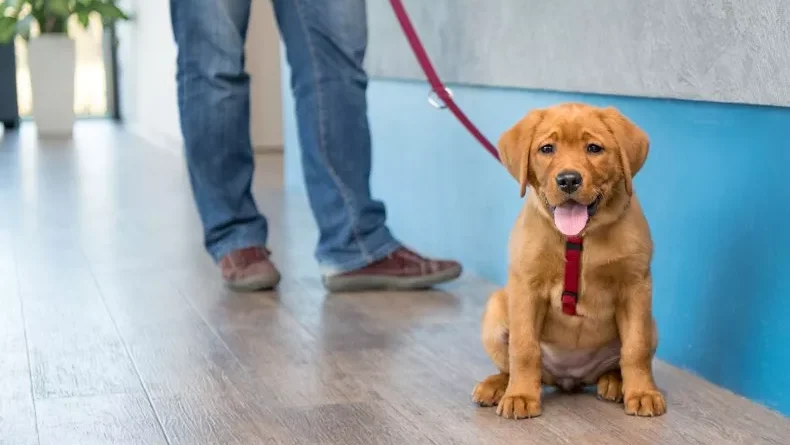Dog Trying To Open Door After Realizing She’s at the Vet Melts Hearts
A dog has won over viewers on TikTok after being caught on camera attempting to escape from a veterinary clinic by opening the door with her paw.
The clip, which was uploaded on August 13 by @jo_______nah, quickly racked up more than 282,000 views, leaving users on the platform in hysterics. In the short video, the dog can be seen standing upright against a door and reaching for the handle, making repeated attempts to pull it down with her paw as if to let herself out.
An overlaid text on the video explained: “My dad sent this video of our dog trying to escape the vet.” The post itself was captioned: “Poor gal.”
The moment resonated with TikTok viewers, who were quick to share their amusement and sympathy in the comments section. Many found humor in the dog’s determined effort to open the door, while others admitted they had seen similar antics from their own pets in stressful situations.
The sight of the dog repeatedly working at the handle drew particular attention, as the movement closely mimics human behavior. It added to the impression that the animal knew exactly what she wanted: a quick escape from the vet’s office.
“Dog is smart,” one viewer said. “The less you see the vet the longer your dog lives. Feed them fresh organic food stay away from dog food.”
“They are smart they know that is not a good place,” another added.
“Bro dogs are literally the funniest things,” a third viewer shared, while another commented: “Let that baby out right now.”
“Dogs often exhibit fear toward veterinary clinics due to a combination of environmental stressors, prior negative experiences, and the influence of owner behavior and training,” veterinarian Dr. Emma Choi told Newsweek. “Environmental stressors in the clinic setting, such as exposure to unfamiliar dogs and people, as well as loud, unpredictable noises, can evoke fear responses in dogs.
“Additionally, certain clinical procedures and tools, including muzzles or restraint techniques, may heighten anxiety and provoke defensive behaviors. Dogs are also particularly sensitive to physical touch in certain areas of the body, such as the head, shoulders, and neck, which can become aversive if handled improperly or unexpectedly by veterinary staff.”

